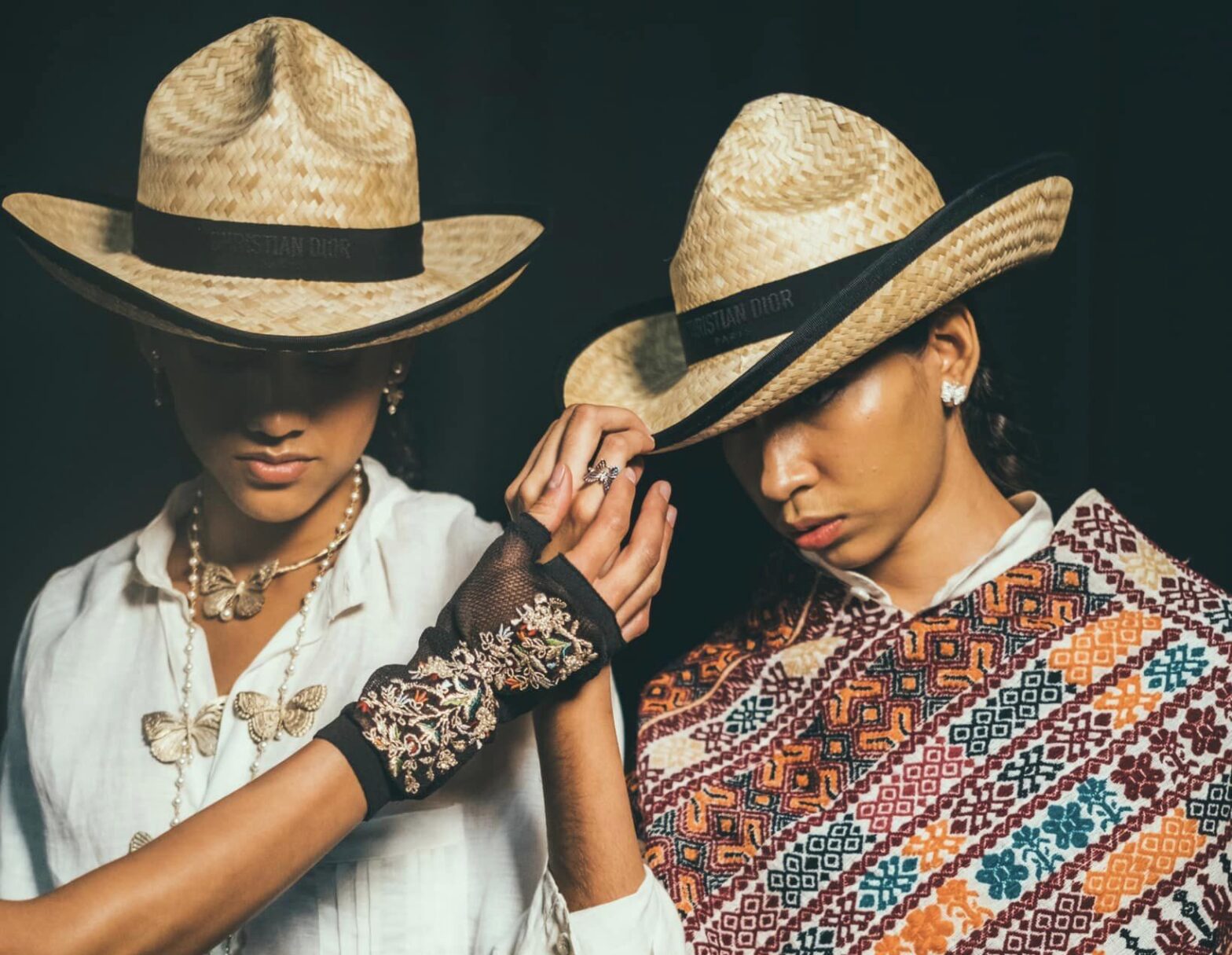Following its pre-fall 2023 show in Mumbai, Dior ventured to another distant runway for its Cruise 2024 collection, this time in Mexico City. With a rich history intertwined with Mexico, including founder Christian Dior’s introduction of the iconic “Mexico” dress in the 1950s and a past fashion presentation in 1954, the brand once again embraced Mexican influence under the creative direction of Maria Grazia Chiuri. Notably, Chiuri drew inspiration from female Mexican rodeo riders for Cruise 2019.
In this latest pre-season collection, Chiuri pays homage to renowned Mexican artists such as Leonora Carrington, Remedios Varo, and Tina Modotti, who spent time in Mexico and were deeply influenced by its culture. However, Frida Kahlo takes center stage as the collection’s central muse. The line incorporates recognizable motifs from Kahlo’s paintings, including butterflies, parrots, monkeys, and birds of paradise, and references to her wardrobe, such as androgynous suiting and huipils paired with full skirts. To further enhance the connection, the show was held at the Antiguo Colegio de San Ildefonso, the historic location where Kahlo famously met Diego Rivera.
Described as an in-depth research project in a press release, the cruise collection explores the social and historical implications of craft cultures. It provides a platform to showcase the works of various Indigenous communities, promoting their artistry and traditions. Chiuri collaborated with local artisans and organizations to bring this vision to life. She sought guidance from Circe Henestrosa, the curator of the “Frida Kahlo, Beyond Appearances” exhibition, who played a vital role in shaping this season’s collaborations.
Among the collaborations, Hilan Cruz Cruiz from Yolcentle Textil contributed embroidered shirts and dresses featuring the flora and fauna of Puebla. Pedro Meza from Sna Jolobil created embroidered sash belts in collaboration with Tzotzil communities from Zinacantan and San Juan Chamula. Remigio Mestas designed huipils using traditional weaving, dyeing, and embroidery techniques from the Zapotecs of San Blas Atempa, the Chinantecs of the Papaluapan Basin, and the Mazatecs of la Chuparrosa. Narcy Areli Morales from Rocinante showcased geometric “pepenado fruncido” embroidery by all-female Mixtec groups in San Lucas Redención, San Pablo Tijaltepec, and Tlaxiaco, Oaxaca. Additionally, Alema Atelier created Jarocho hats inspired by those seen in Veracruz, and Plata Villa, a workshop led by Rafael Villa Rojas, designed butterfly jewelry.
Chiuri emphasized the potential of fashion as a bridge, fostering connections and dialogue between communities through textile art. She acknowledged the importance of preserving local heritage while allowing for contemporary reinterpretations that appeal to a global audience. Dior’s collaboration with artisans provides them with a platform and ensures the longevity of their skills and traditions.
